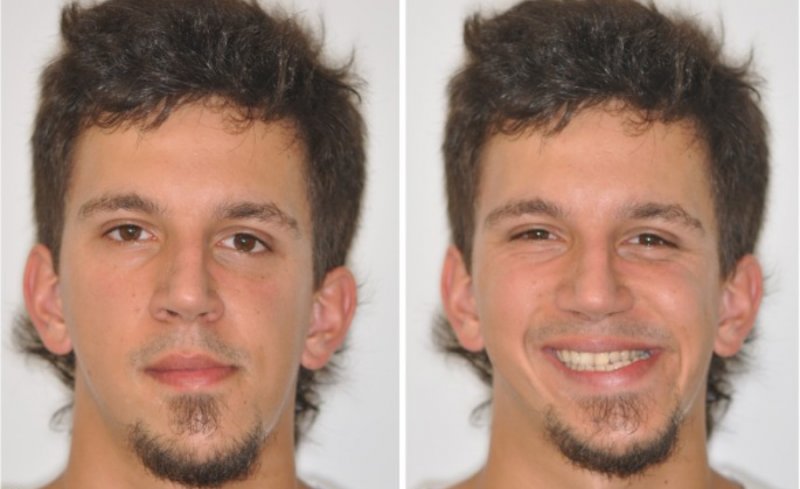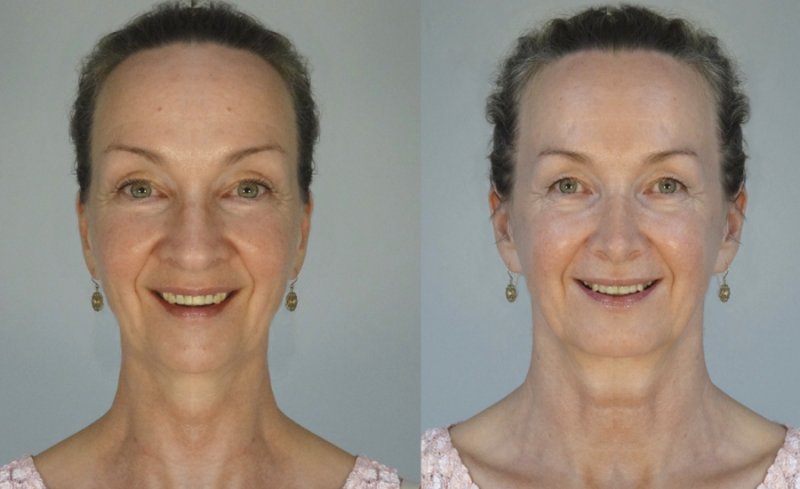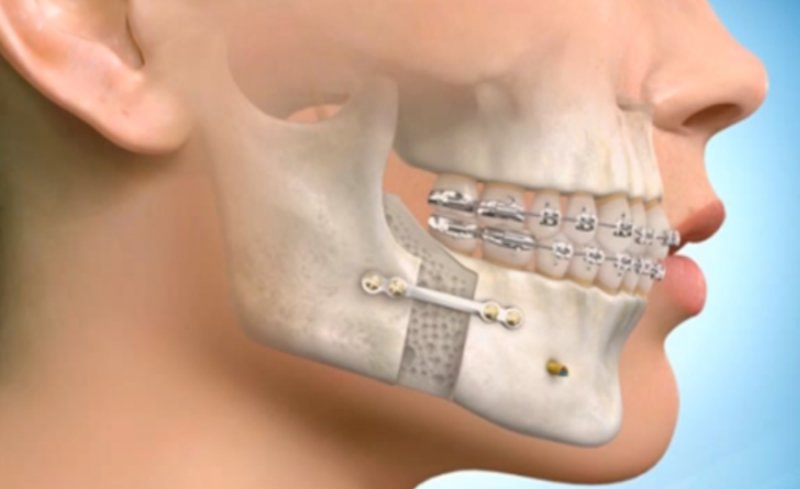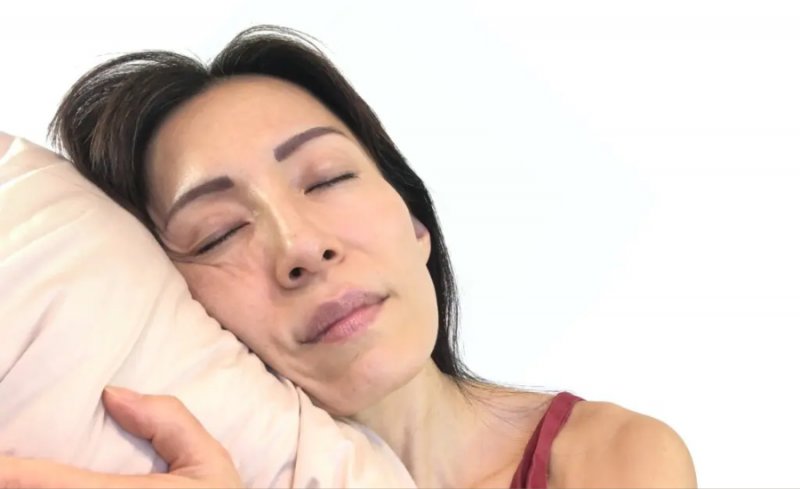How To Fix Facial Asymmetry From Sleeping On Side
Welcome to our comprehensive guide on How To Fix Facial Asymmetry From Sleeping On Side. Sleeping patterns can cause facial asymmetry. Sleeping on the side might affect face symmetry and your overall appearance and well-being.
Genetics, physical imbalances, lifestyle choices, and past accidents and trauma can create facial asymmetry. Identifying and addressing these issues is essential for achieving a more balanced and harmonious facial appearance.
In this guide, we will delve into various approaches to tackle facial asymmetry. We will discuss preventive strategies, facial exercises, massage techniques, non-surgical interventions like orthodontic treatments and facial fillers, and even orthognathic surgery for more severe cases.
We believe in the power of knowledge and understanding, so we’ll provide self-assessment techniques and tips for seeking professional evaluation. We will also emphasize the importance of embracing individuality and building self-confidence beyond physical appearance.
Whether you’re someone experiencing mild facial asymmetry or seeking a way to improve your facial features, this article is here to guide you through the journey. So, let’s embark together on the path to unlocking facial symmetry and enhancing your natural beauty.
Causes of Facial Asymmetry

A variety of factors can cause facial asymmetry. Each person’s causes are different. Facial asymmetry can result from these factors:
Genetics and Predisposition: Facial asymmetry may be inherited in some persons. Different face features can be inherited.
Muscular Imbalances: Facial muscles play a crucial role in maintaining facial symmetry. Imbalances in these muscles can be caused by habits like favoring one side while chewing, smiling, or sleeping.
Lifestyle Factors: Certain lifestyle choices can impact facial symmetry. For example, consistently sleeping on one side can put pressure on specific facial structures and contribute to asymmetry over time.
Injury and Trauma: Accidents, falls, or facial traumas can damage facial nerves or bones, causing facial asymmetry.
Each person may have some mix of these characteristics that contribute to facial asymmetry. Finding the ideal solution to correct the imbalance requires an understanding of the causes. To obtain a more balanced facial appearance, professional evaluation can help identify the problem and guide treatment.
Identifying Facial Asymmetry
Identifying facial asymmetry is an important step in addressing and correcting any imbalances in the proportions and alignment of facial features. While some asymmetry is natural and common in most individuals, significant or noticeable differences between the left and right sides of the face may warrant further investigation.
Here are some practical ways to identify facial asymmetry:
Self-Assessment Techniques:
Try different mirror angles. Check your ears, cheeks, eyes, eyebrows, and jawline. Pay attention to any unevenness in facial contours or features.
Photographic Comparison:
Take photographs of your face from the front, both sides and in profile. Compare these pictures to identify any asymmetries. To evaluate face landmarks for symmetry, draw lines with a ruler or photo editing tool.
Professional Evaluation:
Ask a dermatologist, plastic surgeon, or orthodontist for advice. They have the expertise to identify even subtle asymmetries and can provide a more objective assessment.
Documenting Changes:
Keep track of your facial features over time by regularly taking photos. This can help monitor any progress or changes as you address facial asymmetry through various treatments or exercises.
Facial asymmetry is normal and may not require treatment. If you detect considerable or unpleasant asymmetry that impacts your self-confidence or well-being, consultation with a professional can help you decide what to do.
Early detection of face asymmetry might help you attain facial balance. With proper assessment and personalized treatment plans, it is possible to enhance your natural beauty and regain confidence in your facial features.
Prevention Strategies

Prevention strategies play a crucial role in minimizing the development of facial asymmetry caused by sleeping on the side. While some factors, like genetics, may be beyond our control, adopting certain habits and making lifestyle adjustments can help prevent or reduce the severity of facial asymmetry.
One of the primary prevention strategies is to pay attention to our sleeping positions. Sleeping on the back is better for facial symmetry because it distributes pressure evenly. A supporting pillow might help you sleep on your back.
Pillows and mattresses also matter. Opt for pillows that provide adequate support to the head and neck, keeping the spine aligned while sleeping. Memory foam or contour pillows can be particularly helpful in maintaining proper alignment and reducing pressure on facial structures.
Creating a conducive sleep environment is another essential aspect of prevention. Ensure your bedroom is comfortable and relaxing, promoting restful sleep. Dim the lights, reduce noise levels, and maintain a moderate room temperature to enhance sleep quality.
Additionally, regular facial exercises can strengthen facial muscles and contribute to better facial symmetry. These facial workouts can balance muscle strength in the cheeks, jawline, and forehead.
Mindful facial expressions and routines throughout the day can also help. Avoid excessive favoritism of one side while chewing, talking, or even resting your face on your hand, as these actions can contribute to muscle imbalances over time.
Facial Exercises for Symmetry
Facial workouts enhance facial symmetry without surgery. These exercises develop, tone, and balance facial muscles on both sides.
“Cheek Lifter” facial exercises are easy but effective. This practice involves smiling widely with closed lips. Lift your cheeks softly with your fingertips. Resist finger raising with your facial muscles. Hold for a moment before relaxing. Repeat this exercise to strengthen cheek-lifting and facial-symmetry muscles.
Another useful practice is the “Jawline Definer.” Tilt your head backward and look up. Push your lower jaw forward to reach the ceiling with your chin. Stretch your neck and jawline. Hold for a moment and release. This jawline and neck workout improves facial equilibrium.

“Brow Smoother” improves eyebrow symmetry and reduces forehead creases. Gently push your index and middle fingers above your eyebrows. Lift your eyebrows while resisting finger pressure. Hold briefly and release. This workout lifts and tones brow muscles for a more youthful appearance.
Facial exercises require perseverance and patience. It’s important to do the workouts daily because results may take time. It’s also important to do the exercises correctly to avoid straining facial muscles.
Facial workouts can improve mild facial asymmetry caused by sleeping on the side or other reasons without surgery. For severe face asymmetry, consult a certified healthcare practitioner or cosmetic specialist to discuss possible treatment options.
Massage Techniques
Massage helps relax facial muscles, improve circulation, and reduce facial asymmetry. Facial massages can improve muscular balance and facial beauty.
“Effleurage” massage is used for facial symmetry. Fingertips are used to touch the face gently and rhythmically. The massage follows the facial muscles from the center of the face to the ears. Effleurage relaxes facial muscles, improves blood flow, and promotes facial symmetry.
Another successful method is the “Fingertip Tap.” Tap the face, especially in tight places, with your fingertips. Tapping relaxes facial muscles and increases blood flow. The Fingertip Tap helps reduce jaw tension and enhance symmetry in people who clench or grind their teeth at night.
“Kneading” can benefit hands-on massagers. Circularly massage the face muscles with your fingers. This procedure releases facial muscle knots and adhesions to promote balance and symmetry.
Facial oils or lotions can enhance the massage and nurture the skin. Find skin-friendly, allergen-free items.
It’s important to massage the face gently and not use too much pressure. A massage therapist or aesthetician can help you learn how to massage your face.
Facial massages can relax and improve facial symmetry, although they may not solve severe facial asymmetry. Combining massage with facial exercises or expert interventions may improve results for more severe imbalances. Before starting a facial massage routine, visit a doctor.
Non-Surgical Interventions
Non-surgical facial asymmetry treatments are available. These treatments restore facial balance and harmony with minimal downtime.
Orthodontic therapy for facial asymmetry is widespread. Braces or clear aligners help align teeth and jaws. Orthodontic treatments can improve facial symmetry by straightening the teeth and jaw.
Non-surgical facial fillers are also popular. Injectable treatments like hyaluronic acid enhance the volume and shape of specific facial areas. A qualified physician can improve facial features and symmetry using fillers. Fillers can restore volume to one cheek to create symmetry.

Botox relaxes face muscles. It can diminish facial asymmetry-causing muscle activation in targeted facial muscles. Botox can improve facial equilibrium by relaxing particular muscles.
People who want to avoid surgery and rehabilitation prefer non-surgical methods. These therapies usually yield immediate results, allowing patients to continue their normal routines. To ensure a customized treatment plan, consult with a skilled and experienced medical expert before any non-surgical intervention.
Mild to moderate facial asymmetry can be treated non-surgically, while severe cases may require a combination of treatments or surgery. Based on your facial characteristics and asymmetry issues, your doctor can recommend a non-surgical treatment or combination of therapies.
Orthognathic Surgery
Orthognathic surgery corrects jaw and faces bone abnormalities and substantial facial asymmetry. Realigning the jaws improves facial function and appearance. Orthognathic surgery is advised for serious jaw discrepancies that cannot be corrected non-surgically.
Orthodontists, oral surgeons, and maxillofacial surgeons assess the patient. The team evaluates jaw misalignment and creates a customized treatment plan using modern imaging and meticulous inspection.
Repositioning the jawbones improves facial symmetry and alignment during surgery. Inside-the-mouth incisions minimize scarring. Plates, screws, or wires secure the bones. Bone transplants can sometimes fill gaps.

Orthognathic surgery can correct overbite, underbite, open bite, and crossbite, which can cause facial asymmetry and speech and chewing problems. The surgery generally improves facial balance and harmony through aesthetic changes.
Orthognathic surgery recovery might take weeks, with swelling, bruising, and pain. An initial post-operative diet may be advised.
Orthognathic surgery can permanently correct severe facial asymmetry, but it takes careful planning and experience. Orthognathic surgery is risky, therefore patients must consult with their doctors to understand the benefits, dangers, and expected outcomes. Orthognathic surgery can enhance the function, self-confidence, and overall well-being of people with severe facial asymmetry.
Lifestyle Changes to Support Facial Symmetry
Lifestyle changes support facial symmetry and balance. These improvements improve daily routines that may cause facial asymmetry. These lifestyle changes improve muscle balance and lessen facial asymmetry. Posture matters. Posture during the day aligns the head, neck, and spine. Avoiding slouching and head tilting can reduce facial muscle tension and improve facial equilibrium.
Nutrition and hydration are essential. Getting enough vitamins, minerals, and antioxidants helps skin and muscles. Dehydration can cause muscle tension and disrupt face-muscle balance. Facial symmetry requires stress management. Muscle strain from chronic stress can create facial asymmetry. Meditation, deep breathing, and yoga alleviate stress and relax facial muscles. Facial expressions and daily behaviors might also help. For instance, people who habitually clench their jaw or compress their lips should learn to relax their face muscles.
Avoid sleeping on one side of the face. If you sleep on one side, try sleeping on your back or using supportive pillows to reduce facial strain.
Finally, daily facial exercises and massages help improve facial symmetry. Massages and exercises develop and balance facial muscles.
Lifestyle adjustments can help, but facial asymmetry is common. However, if facial asymmetry is affecting your self-confidence or function, a competent healthcare professional or cosmetic specialist can provide tailored guidance and treatment alternatives to achieve a more balanced and harmonious facial appearance.
conclusion
Facial symmetry and side-sleeping asymmetry can be changed. A specific treatment plan requires understanding facial asymmetry’s hereditary and behavioral origins. Optimal sleep positions and supporting pillows can prevent facial imbalances.
Facial exercises and massage techniques offer non-surgical and natural methods to enhance facial muscle balance and promote overall facial harmony. Consistency and patience are key to achieving meaningful results through these interventions.
For more significant facial asymmetry, non-surgical interventions like orthodontic treatments, facial fillers, and Botox can provide effective and subtle enhancements, catering to individual needs and preferences. However, for severe cases, orthognathic surgery remains a powerful option to achieve lasting improvements in facial alignment and appearance.
Embracing individuality and recognizing that some level of asymmetry is natural can foster self-acceptance and promote positive body image. It is essential to remember that beauty comes in diverse forms, and facial symmetry is just one aspect of our unique identity.
By implementing lifestyle changes, including maintaining good posture, adopting a nutritious diet, managing stress, and being mindful of facial habits, individuals can support facial symmetry and enhance their overall well-being.
Stay in touch to get more updates & alerts on Hint! Thank you







